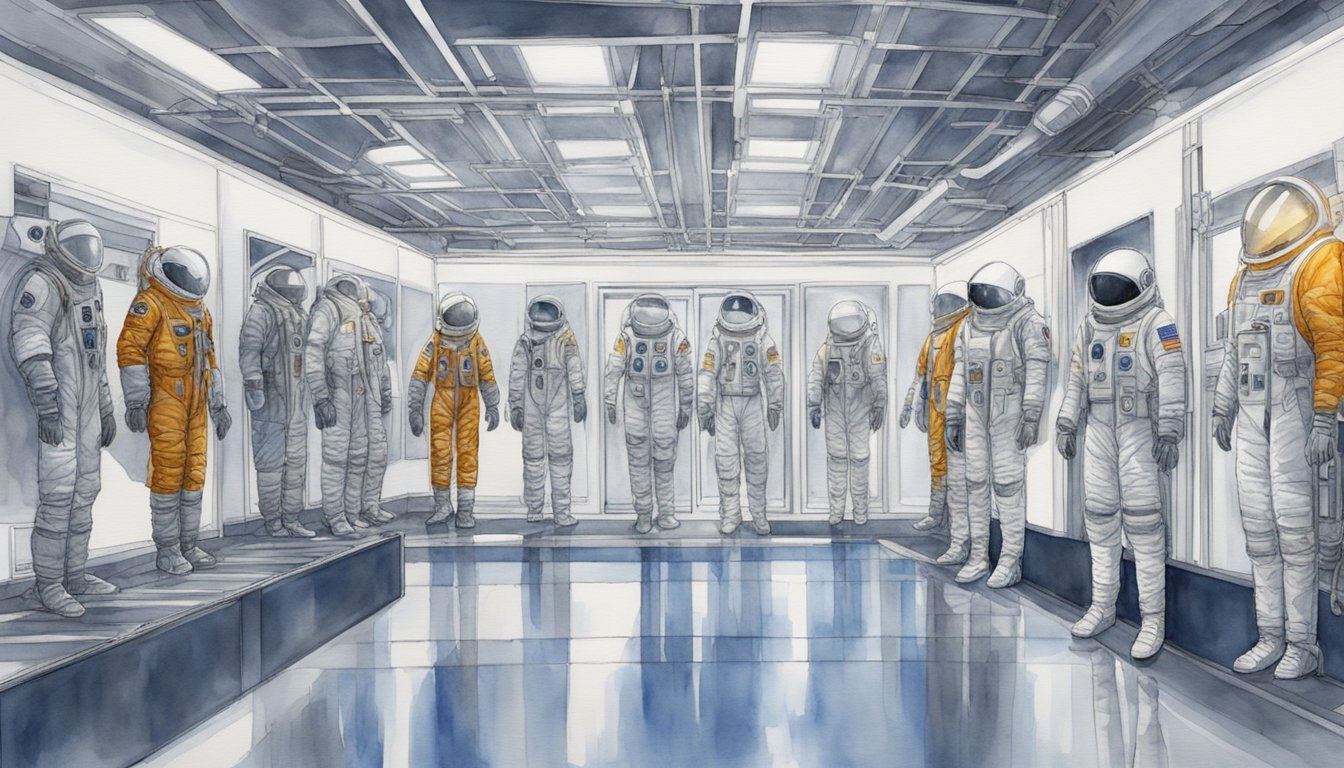Evolution of Spacesuit Design
From Apollo to Artemis: The Journey
The evolution of spacesuits has come a long way since the early days of the Apollo program. The new generation of spacesuits is being designed to support the Artemis lunar missions. NASA’s Artemis program aims to land astronauts on the Moon once again, including the first woman and the next man, ultimately paving the way for human missions to Mars.
In the Apollo era, the focus was mainly on lunar surface exploration. The spacesuits had to provide a combination of safety, mobility, and life support for the astronauts. Nowadays, NASA is developing more advanced spacesuits, known as the Extravehicular Mobility Unit (xEMU) and Orion Crew Survival System, which can cater to different tasks and situations. The xEMU suits have been designed for lunar surface missions, including the planned Artemis III landing on the lunar south pole.
The Innovation Behind Modern Spacesuit Technology
The modern spacesuit technology incorporates several improvements, including increased flexibility, extended life support systems, and enhanced range of motion. Engineers working with NASA have come up with innovative designs to make spacesuits more versatile and user-friendly. For instance, the new spacesuits come with a backpack that houses avionics, life support systems, and power, all of which are essential for an astronaut’s survival during extravehicular activities.
The xEMU prototype features a robust design suited for lunar and Mars exploration. It has been equipped with durable components, like boots, insulation, and protection layers to deal with the harsh environment of space. The key innovations are centered around providing better safety, increased mobility, and improved life support for astronauts.
Designing for Diversity: Suits for Every Astronaut
An essential aspect of the modern spacesuit design process is its capability to accommodate a diverse group of astronauts. NASA has been working to create spacesuits that can be adjusted and customized to fit a broader range of body sizes and shapes. This is a significant step forward, as the Apollo suits were primarily designed with a specific group of astronauts in mind, limiting the participation of others in space missions.
As we progress toward an era of American leadership in space, it is crucial to ensure that all astronauts, regardless of their size or gender, have access to well-fitted spacesuits that allow them to complete all required tasks and missions. The ongoing research and development in spacesuit design will play a vital role in determining the success of future missions, making the dreams of diverse Moonwalkers and Martian explorers come true.
Operational Aspects of Space Exploration

Enhancing Mobility for Space Missions
One of the critical aspects for astronauts in space is mobility. Improvements in technology and design have allowed both better movement and safety. The new spacesuits that astronauts will be using for upcoming space missions are designed to enhance mobility, particularly in the current microgravity environment of the International Space Station (ISS). A significant focus is on improving the flexibility and maneuverability of joints in spacesuits, such as the elbows, wrists, and knees. These innovations will allow astronauts to perform extravehicular activities (EVA) more efficiently. For example, SpaceX and Axiom Space are working to provide improved mobility for astronauts on their future space missions.
Life Support and Protection for Astronauts
The life support and protection system in a spacesuit is crucial for astronaut safety during EVAs. These systems must be reliable and efficient to ensure that astronauts can survive and complete missions. Companies like Collins Aerospace are developing a portable life support system that provides a stable and redundant system for astronauts to depend on.
In addition to life support, spacesuit designs need to address the issue of glove durability and comfort. Astronauts like Peggy Whitson have reported difficulties with the limited flexibility of gloves during spacewalks, which can lead to finger injuries or compromised mission achievements.
Future Prospects: Lunar Surface and Beyond
The next generation of spacesuits is being developed with the upcoming lunar missions in mind, such as the Artemis III mission, which aims to land the first woman and person of color on the moon. The lunar surface poses unique challenges for spacesuit design, including the need to withstand extreme temperatures and maneuverability in a permanently shadowed lunar landscape. The Human Surface Mobility Program is working on solutions to address these challenges, enabling astronauts to explore the lunar South Pole and other areas with efficiency and safety[^1^].
In addition to lunar missions, commercial service providers such as SpaceX are also investing in spacesuit technology, pushing the boundaries of technical ingenuity for human spaceflight. As the demand for space exploration and commercialization expands, it will be essential for space agencies and private companies to collaborate on developing new spacesuit technology that is faster, cheaper, and more efficient in providing a safe and comfortable environment for astronauts in space.

